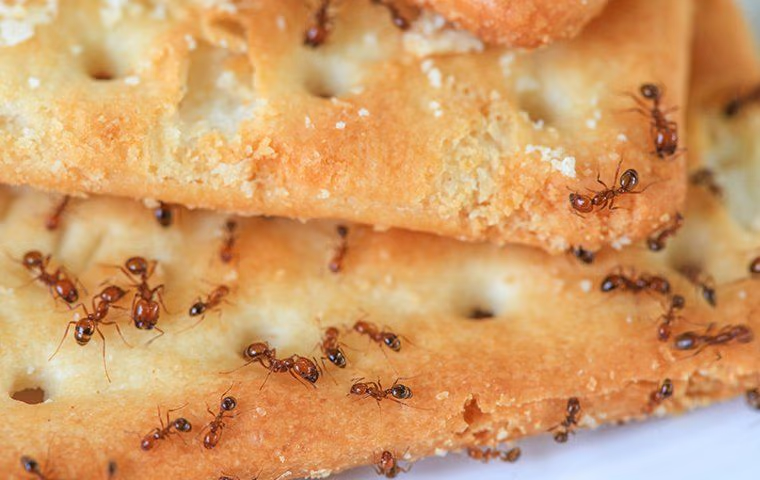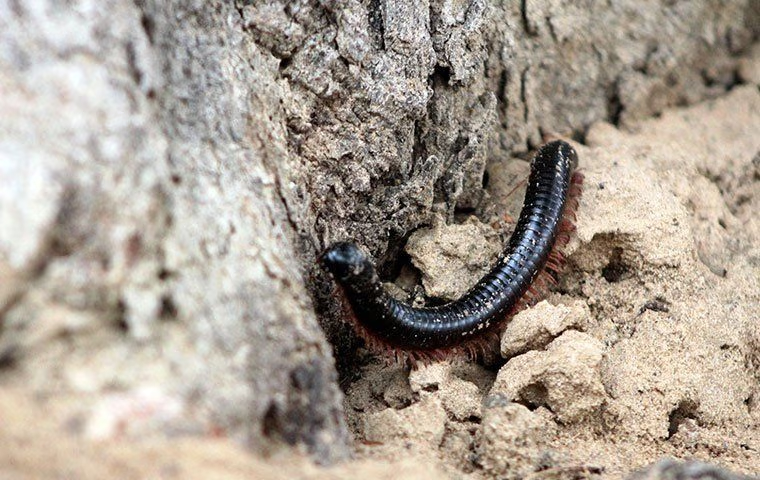Bigheaded ants (BHA) are second to sugar ants among the most common household-infesting ant species in South Florida. Bigheaded ants are a tramp species found in many subtropical and tropical regions worldwide. In South Florida, BHA are an invasive species that is threatening native ants and capable of displacing tough ants such as the red imported fire ants and white-footed ants.
What Do Bigheaded Ants Look Like?
In South Florida, bigheaded ants are red to reddish brown and adult ants measure 1/8″ long. This species is easily identified among other ants because, in each colony, there are major and minor workers. The head of the major workers has the shape of a heart and is much larger than the rest of the body. The majors only make up 1% of the population. They use their large mandibles to break up large food items such as the husks of seeds and insect body parts. The majors are also the colony’s soldiers, and their task is to defend the colony from other ant species.
What Do Bigheaded Ants Eat?
Bigheaded ants are omnivorous and feed on a variety of foods. Outdoors, BHA feed on live and dead insects, seeds, and honeydew. Workers often gather around large arthropods and bring the prey to the nest. The mandibles of major workers play a crucial role in chopping up insect body parts.
Indoors, your kitchen and pantry cabinet is an easy target for grease, meats, peanut butter, fruit juice, and honey. Bigheaded ants prefer foods with high protein content. Granular baits are excellent products for controlling BHA because they contain proteins and fats.
How Did I Get Bigheaded Ants?
Bigheaded ants are soil-nesting ants. It is the only species capable of excavating tunnels underground that can extend beyond your property line. They dig so aggressively that in properties where the infestation has become a super colony, you will find the displaced soil next to the foundation, around tree trunks, under shrubs, cracks in cement slabs, around unsealed pavers, and along walkways. The entrance to the multiple nests around the yard is where you will find most of the sand accumulation. The colonies have multiple queens capable of forming super colonies of 2,000 to 3,000 individuals.
How To Get Rid Of Bigheaded Ants?
Bigheaded ants are one of the most challenging species to control, especially once they become a super colony. The best control methods involve a combination of treatments. Inspecting the foundation and surrounding vegetation is key to finding the nesting grounds.
Treat the foundation of every structure on the property with a non-repellent insecticide. Follow that with a thorough application of granular bait throughout the landscape. The application of bait is critical to gain control of bigheaded ants. The foragers will carry the bait many feet away from the structure, creating a bubble of protection around your South Florida home.
Treating the neighboring property may be necessary for some situations to achieve faster control. If the ants are already foraging inside the home, a light mist of a non-repellent product around the baseboards will also help speed up the elimination.
Bigheaded ants transfer food to other members, and despite this fact, the use of gel baits is not as effective as with sugar ants or white-footed ants. Homes with a severe infestation of BHA may find dead ants four to six weeks after the initial treatment.
How Serious Are Bigheaded Ants?
Since bigheaded ants are aggressive excavators, they can cause damage to lawns, affecting the landscape’s aesthetics. To expand the nest, this ant brings the soil up through pavers on the driveway or cracks on slabs.
When a bigheaded ant infestation is left unattended, this species will excavate under the foundation and enter the home via expansion joints and cracks in the slab. As the foraging ants move indoors, homeowners often see dirt next to baseboards and sometimes sand piles. Occasionally, BHA nest in wall voids. If you open an electrical outlet plate and a bunch of sand and debris comes out, you are facing a severe bigheaded ant infestation.
This ant causes no structural damage, but sometimes bigheaded ants are mistaken for subterranean termites because they also create tubes. These tubes are much more fragile than termite tubes.
Bigheaded ants do not sting and will only bite if the nest is disturbed.
How To Prevent Bigheaded Ants?
Since this ant species is so prolific when it comes to breeding, and they protect their nesting sites under objects, there aren’t many things homeowners can do to prevent bigheaded ants.
The following tips will help mitigate their presence:
- Keep firewood or debris away from the house
- Seal cracks and gaps around windows and foundations
- Remove or repair loose slabs against the structure
- Seal pavers with sealant
While these tips may be helpful, the only way to eliminate bigheaded ants is with professional help from GOTBUGSIKILL.
When Should I Call An Exterminator For Bigheaded Ants?
The first evidence of bigheaded ant activity will be outside your home. If you find sand piles on your driveway or disturbed soil in lawns and around objects (tree trunks, shrubs, slabs, sidewalks, fence posts, utility posts, mailbox posts), it is time to act and call a pest control company.
If you wait too long to hire an exterminator, the ant infestation will explode into super colony status, and you will have bigheaded ants everywhere inside your home.
When the infestation achieves super colony status, you can expect to see hundreds of ants dying inside the house after the initial treatment. If you want to avoid this frustration and headache, call us today for a free initial inspection.
GOTBUGSIKILL is the highest-rated pest control company in Palm Beach, Broward, and Miami-Dade. KILL365 is our signature pest prevention program that will keep your family and pets safe from ants and other pests.

